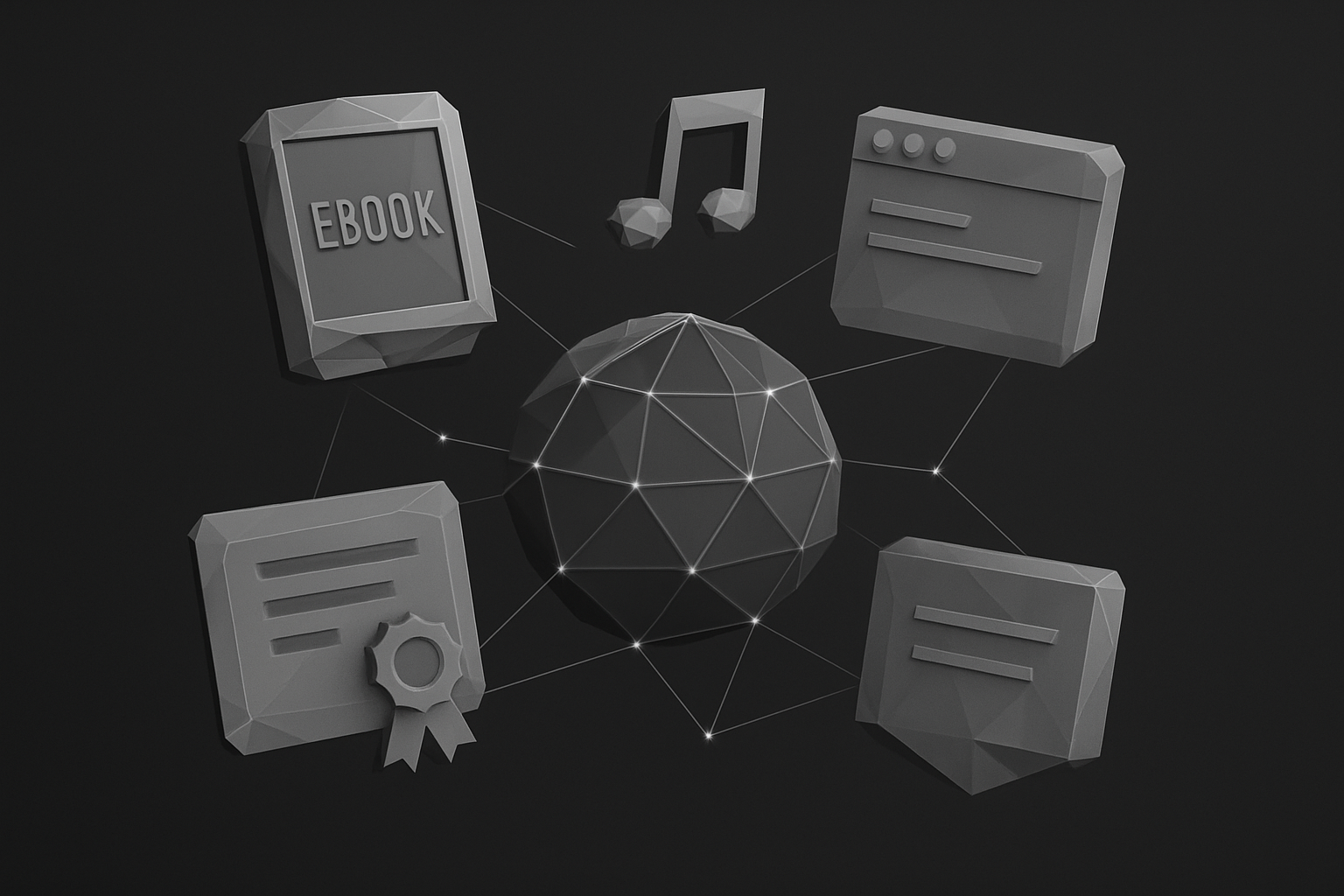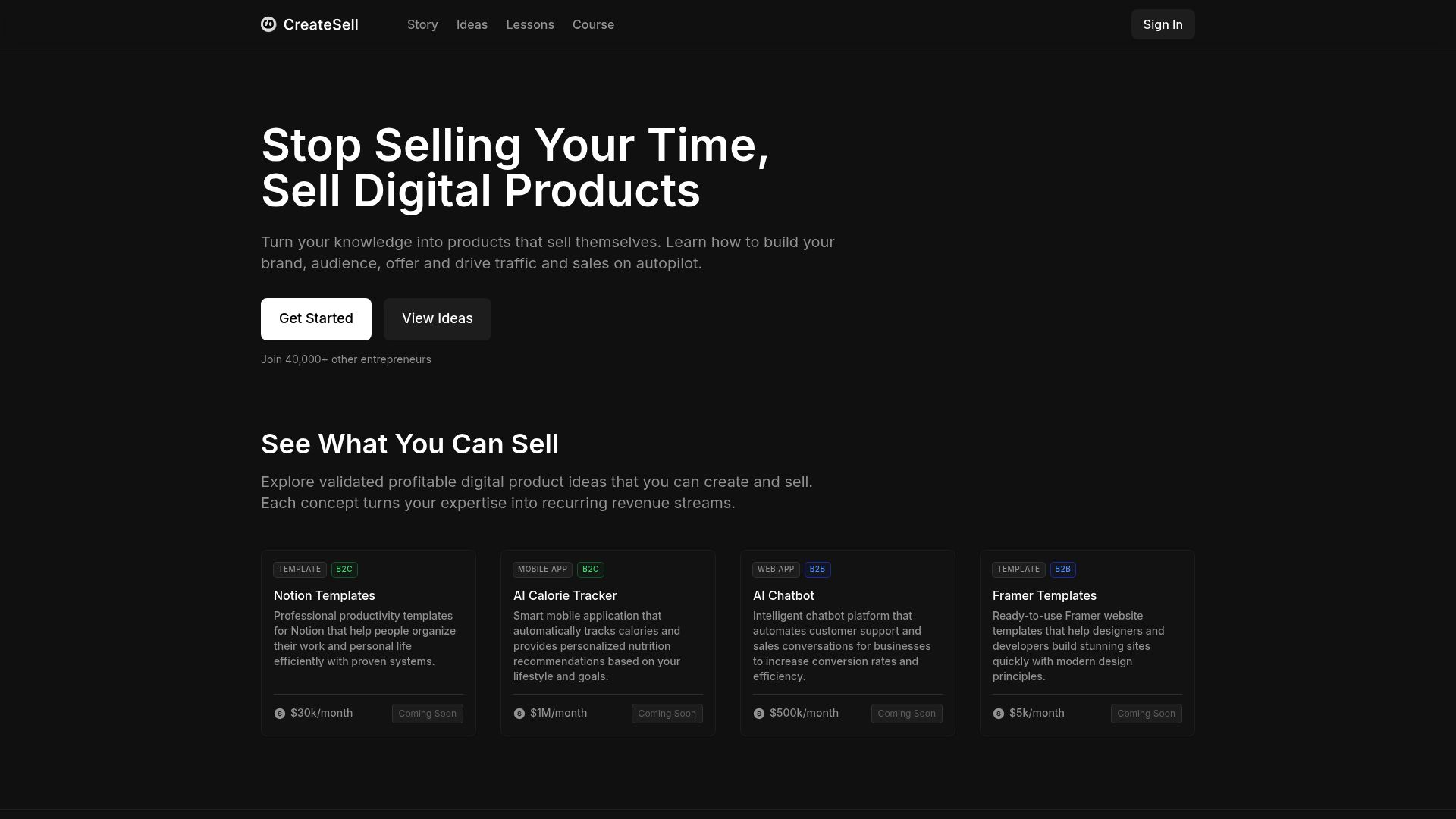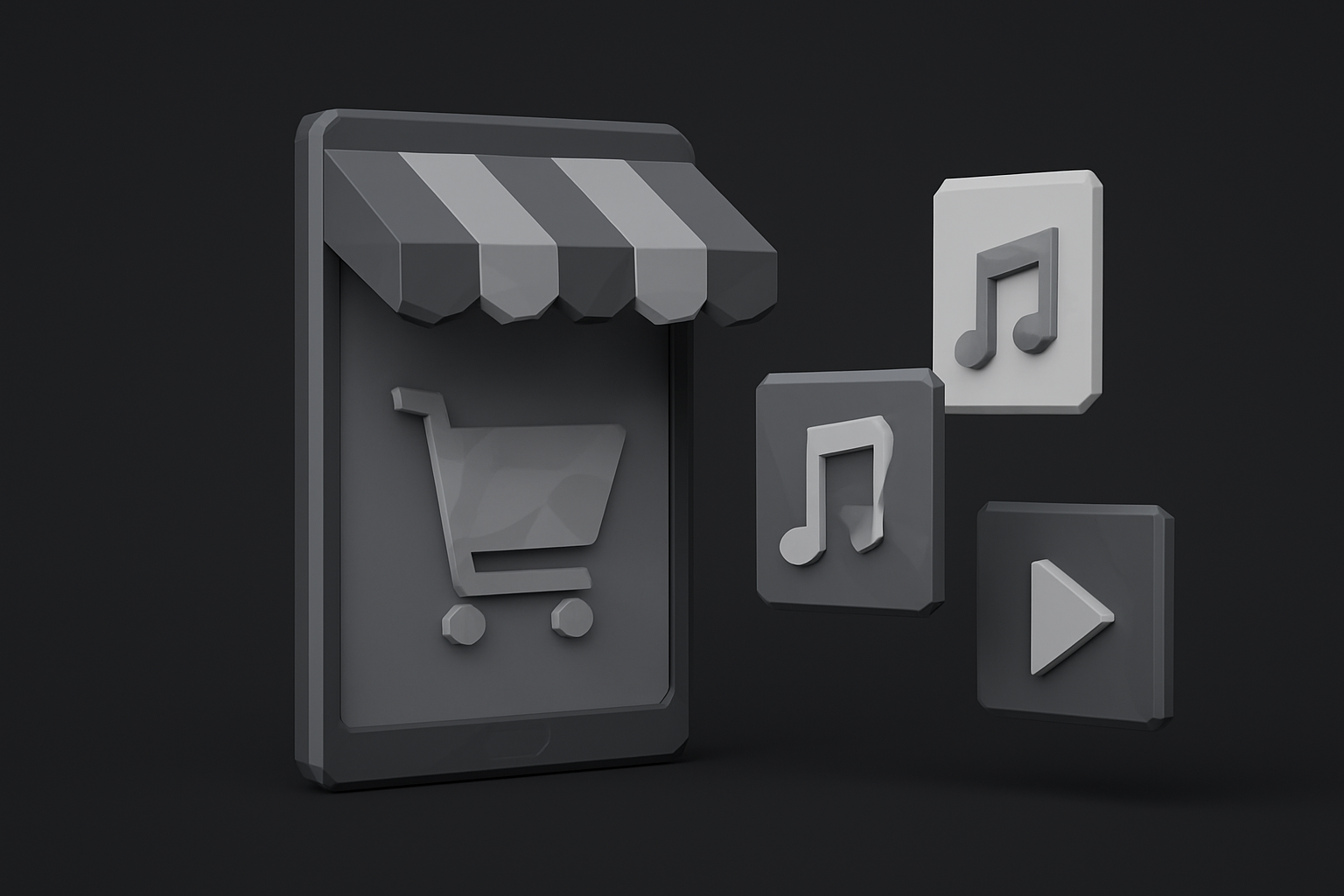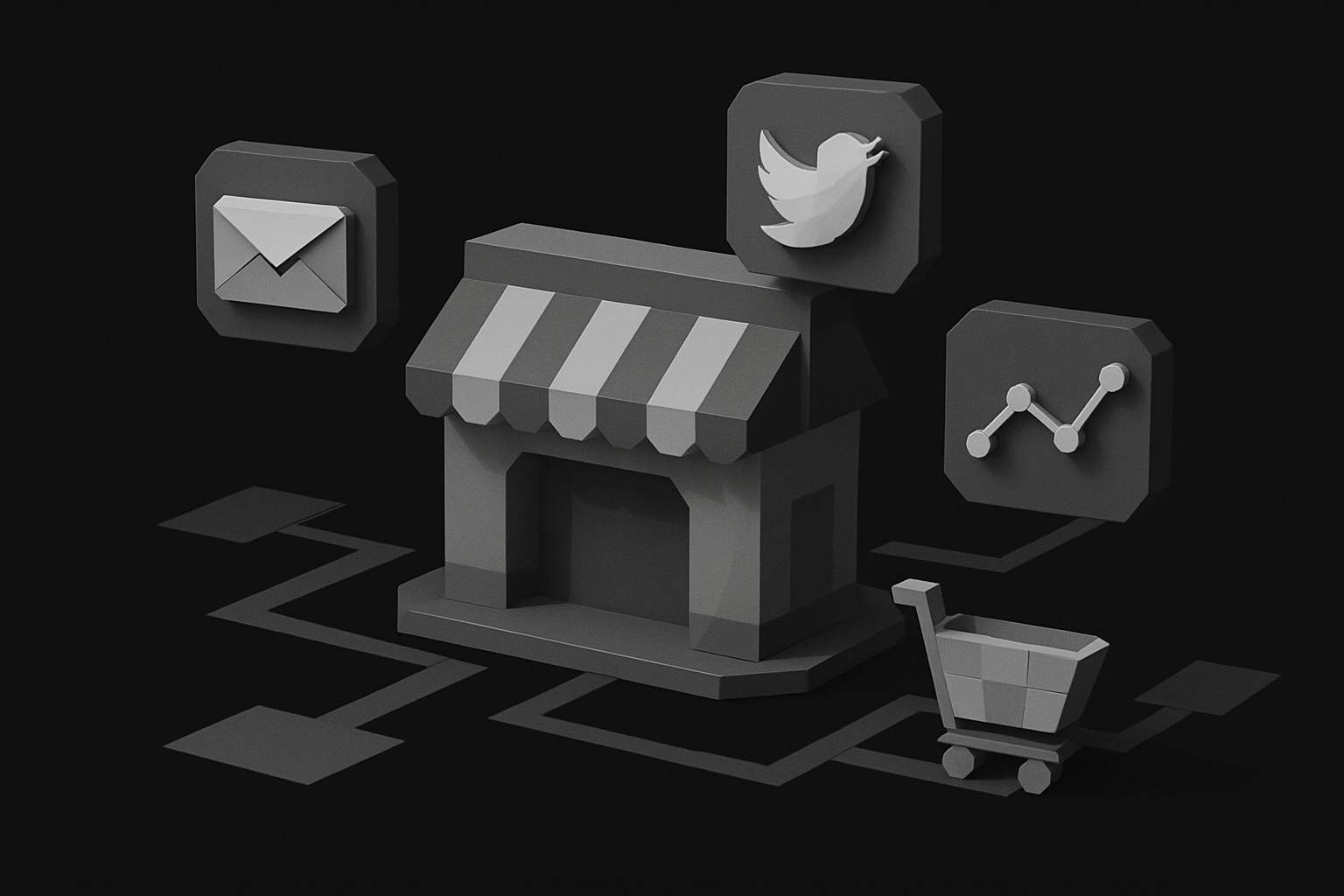In 2025, the opportunity to sell digital goods has never been more exciting. Whether you’re a creator, entrepreneur, or side-hustler, this fast-growing market can help you turn your skills into real income.
This step-by-step guide will walk you through every aspect of how to sell digital goods successfully—from choosing and creating your product, to setting up your storefront, pricing, legal essentials, marketing, and automation for passive income.
The digital economy is booming—don’t miss your chance to profit. Discover proven strategies, learn how to turn your expertise into sustainable earnings, and follow these actionable steps to launch and grow your digital goods business.
Understanding Digital Goods in 2025
In 2025, digital goods are at the heart of the creator economy, transforming how we earn and share value online. Whether you want to sell digital goods as a creator, entrepreneur, or side-hustler, understanding this landscape is the first step to long-term success.

What Are Digital Goods?
Digital goods are intangible products that can be sold, delivered, and consumed entirely online. Common examples include:
- eBooks and downloadable guides
- Templates (design, productivity, business)
- Software and mobile apps
- Music, sound effects, and audio packs
- Online courses and micro-courses
- AI-powered tools and plugins
- Graphics, illustrations, and video assets
What makes digital goods unique? They’re scalable, easily distributed, and require no physical inventory. In 2025, trends show a surge in demand for AI-based tools, personalized micro-learning, and customizable templates. The digital goods market is booming, with the digital goods market projected to grow by 15%+ annually, making now the ideal time to sell digital goods and tap into this expanding opportunity.
Why Sell Digital Goods?
Choosing to sell digital goods offers unparalleled advantages for modern entrepreneurs:
- Minimal startup costs: No warehouses, shipping, or manufacturing.
- No inventory headaches: Products are delivered instantly, anywhere in the world.
- Global reach: Your store is open 24/7 to customers worldwide.
- High profit margins: Often 70–90% due to low overhead.
For example, creators of Notion templates have reported earning $30k/month, showing just how lucrative it can be to sell digital goods with the right approach. This business model is perfect for those looking for flexibility and scalability.
Popular Digital Goods Niches for 2025
If you want to sell digital goods, focus on niches where demand is rising:
- E-learning: Online courses, coaching sessions, and micro-courses
- Productivity tools: Templates, planners, and workflow systems
- Creative assets: Graphics, music, video packs, and stock photography
- SaaS and micro-apps: Software solutions, plugins, and extensions
- AI-powered digital solutions: Automation tools, chatbots, and data analysis apps
Consider the story of an AI calorie tracker app that reached $1M/month in revenue—proof that the right digital product can unlock massive potential when you sell digital goods in a targeted niche.
Key Challenges and Opportunities
While the urge to sell digital goods is strong, be mindful of these challenges:
- Market saturation: Standing out is tougher as more creators join.
- Piracy and copyright: Protecting your work is critical.
- Evolving customer expectations: Instant access and personalization are the new norm.
However, the opportunities are just as significant:
- Automate delivery and customer support for passive income
- Create subscription models for recurring revenue
- Reach a truly global audience, scaling your impact when you sell digital goods
Adapt quickly, invest in quality, and leverage automation to stay ahead in this fast-moving market.
Step 1: Choosing the Right Digital Product to Sell
Ready to take your first step to sell digital goods? The journey starts with self-assessment, research, and a smart plan. Let’s break it down so you can confidently launch your digital product in 2025.
Identifying Your Skills and Market Demand
Start by mapping your strengths, passions, and what sets you apart. Are you a designer, educator, or developer? There’s a digital product for every skill set.
Research what’s trending in 2025. Browse Etsy, Gumroad, and Product Hunt to see what’s hot—think AI-powered tools, micro-courses, and customizable templates. Use keyword tools to check demand; for example, “Notion template” sees thousands of monthly searches.
Look for proof: designers are cashing in by turning Figma templates into sellable assets. Want to dig deeper into how to sell digital goods? The Digital products selling guide is a great place to start for foundational knowledge.
Validating Your Product Idea
Once you’ve picked a direction, validate before you build. Run surveys with your audience, launch a simple MVP, or offer pre-sales to measure real interest.
Check out your competitors. What’s selling well, and what’s missing from the market? High refund rates might signal problems you can improve upon.
For example, some creators pre-sell a course, gather feedback, and refine the content before a full launch. It’s a low-risk way to test if your plan to sell digital goods will actually work.
Selecting a Profitable Niche
Focus is your friend. Zero in on a specific, underserved audience—like productivity tools for remote teams or micro-SaaS solutions for freelancers.
B2B niches often command higher prices than B2C. Use the data: business buyers are willing to pay more for time-saving digital products.
Take inspiration from successful micro-SaaS tools built for niche groups. This targeted approach makes it easier to stand out and sell digital goods consistently.
Planning Your Product Creation Process
Outline your product’s content, features, and delivery format before you start. Set milestones and realistic deadlines so you stay on track.
Leverage user-friendly tools: Canva for design, Loom for quick video lessons, Notion for organizing your workflow. Batch create assets—like recording several course videos at once—to save time.
This structured approach ensures your offer is polished and ready to sell digital goods at scale.
CreateSell: Empowering Digital Product Entrepreneurs
CreateSell is designed to help you master every aspect of how to sell digital goods, from brainstorming to scaling. Access step-by-step courses and a library of proven ideas.

You’ll join a community of 40,000+ creators, get automation strategies, and learn from real-world examples. Whether you’re a coach, consultant, or first-time creator, you’ll find expert insights and frameworks to launch and grow your digital products.
It’s the ultimate support system for anyone aiming to sell digital goods and build a passive income stream in 2025.
Step 2: Setting Up Your Digital Storefront
Setting up your digital storefront is the foundation for a successful journey to sell digital goods. Your online store is more than just a website—it’s the gateway for customers to discover, buy, and access your products 24/7. A seamless setup ensures buyers trust you, get instant access, and come back for more.

Choosing the Right Platform
The platform you choose to sell digital goods shapes everything from user experience to how you accept payments. Popular options like Shopify, Gumroad, Sellfy, WooCommerce, and Teachable each offer unique benefits. Some are plug-and-play, while others allow deep customization or course-specific features.
Let’s compare a few top choices:
| Platform | Best For | Pros | Cons |
|---|---|---|---|
| Shopify | All digital goods | Scalable, flexible | Monthly fees |
| Gumroad | Creators, artists | Simple, low fees | Limited design |
| Teachable | Online courses | Course features | Higher cost |
| Sellfy | Small stores | Easy setup | Limited plugins |
To make the smartest choice, check out this Best platforms for selling digital products in 2025 guide for a deep dive into features and comparisons.
Creating a User-Friendly Store Experience
Your store’s design and flow can make or break your first impression. Buyers expect a clean, intuitive layout where they can quickly find and buy digital goods. Prioritize professional branding, clear navigation, and mobile-first design—over 60% of digital purchases now happen on mobile devices.
- Use high-quality images and concise product descriptions.
- Offer instant access and download links after purchase.
- Feature real customer testimonials and product previews.
These steps help customers feel secure and excited to buy from your store, making it easier to sell digital goods to a broader audience.
Payment Processing and Pricing Strategies
Seamless payment processing is essential when you sell digital goods. Integrate trusted payment gateways like Stripe, PayPal, and Apple Pay to cater to global buyers. Don’t forget to enable multiple currencies and consider local taxes for international customers.
Explore pricing models that fit your audience:
- One-time payments for simple digital goods
- Subscriptions for ongoing value (like memberships or new templates)
- Pay-what-you-want for flexible buyers
- Tiered pricing for bundles or premium features
A well-structured payment and pricing plan increases conversion rates and helps you sell digital goods profitably.
Legal Essentials for Selling Digital Goods
Protecting your business and your customers is non-negotiable when you sell digital goods. Set clear digital product licenses, terms of use, and copyright notices. Be upfront about refund policies—digital goods often have different rules than physical items.
Don’t overlook privacy and compliance:
- Adhere to GDPR and other data laws for customer information.
- Use secure checkout processes.
- Offer clear contact details for support.
Legal clarity builds trust and reduces friction, letting you focus on growing your digital goods business.
Automating Delivery and Customer Support
Automation is your secret weapon to scale as you sell digital goods. Tools like Zapier or built-in platform features can instantly send download links or access codes post-purchase. Set up FAQ sections and automated helpdesk responses to resolve common questions without manual effort.
- Trigger onboarding emails for new customers.
- Offer secure, unique download links to prevent piracy.
- Use chatbots for 24/7 pre-sale or support inquiries.
The less time you spend on manual tasks, the more you can focus on creating and marketing new digital goods.
Building Trust with Customers
Trust is the currency of the digital world—especially when you sell digital goods. Showcase real reviews and testimonials from satisfied buyers. Display privacy badges and secure payment icons to reassure visitors.
- Offer money-back guarantees where possible.
- Share customer success stories and user-generated content.
- Keep your checkout process transparent and easy to navigate.
By making your store welcoming and credible, you’ll encourage more people to buy and return for future digital goods.
Step 3: Marketing and Selling Your Digital Goods
Ready to launch and grow your business? Mastering how to market and sell digital goods is where your effort pays off. With so many creators entering the space in 2025, the right strategies can make your digital products stand out and generate consistent sales.

Building Your Brand and Audience
To successfully sell digital goods, start by building a brand that resonates with your target audience. Craft a unique value proposition that highlights what sets your products apart—are you offering time-saving templates, expert-level courses, or cutting-edge AI tools?
Grow your audience by:
- Creating an email list with compelling lead magnets, like free mini-guides or sample templates.
- Leveraging social media platforms such as Instagram, Twitter, and LinkedIn to share insights, tips, and behind-the-scenes content.
- Engaging with your community on platforms like Discord, where creators often build strong, loyal followings.
A strong brand and audience are the foundation for all your efforts to sell digital goods in 2025.
Content Marketing Strategies
Content marketing is a powerful way to educate, attract, and convert potential customers when you sell digital goods. Start by publishing blog posts, tutorials, and case studies that showcase your product’s value and how it can solve real problems.
Optimize your content for SEO by targeting keywords such as “buy [your product] online” or “best productivity templates 2025.” Consider sharing your expertise through guest posts or podcasts to expand your reach.
For example, creators who consistently share actionable tips and product demos often see higher engagement and trust—both crucial for those looking to sell digital goods successfully.
Paid Advertising and Influencer Partnerships
Accelerate your efforts to sell digital goods using paid ads and strategic influencer partnerships. Platforms like Meta Ads, Google Ads, and Bing Ads allow you to target highly specific audiences based on interests, behaviors, or demographics.
Test different ad creatives and messaging, doubling down on what delivers results. Don’t overlook the power of micro-influencers—these creators can promote your digital goods authentically to niche communities, often driving better ROI than broad campaigns.
Collaborating with influencers and affiliates can quickly amplify your reach, making it easier to sell digital goods to new audiences.
Leveraging Marketplaces and Affiliate Networks
Expand your reach and sell digital goods on established marketplaces like Etsy, Creative Market, and AppSumo. These platforms have built-in audiences searching for digital products, lowering your marketing barrier.
Join affiliate networks such as Clickbank, JVZoo, and Digistore to recruit partners who promote your products for a commission. Set competitive payouts to incentivize high-performing affiliates.
For inspiration on what’s trending and profitable, check out the Best digital products to sell to help you choose the right offerings for these channels.
Email Marketing and Automation
Email marketing remains one of the highest ROI channels to sell digital goods. Build automated email sequences that welcome new subscribers, nurture leads, and upsell related products.
Segment your list based on interests or purchase history to deliver personalized offers. Automate abandoned cart reminders—these can recover up to 20% of lost sales.
By automating your email marketing, you’ll build stronger relationships and maximize every opportunity to sell digital goods around the clock.
Community Building and Customer Engagement
A thriving community can supercharge your ability to sell digital goods. Create private groups on Facebook, Slack, or Circle to give your customers a space to connect, share feedback, and support each other.
Encourage user-generated content and offer referral incentives to turn happy customers into advocates. Host live webinars or Q&A sessions to boost engagement and trust.
When you foster a sense of belonging, customers feel invested in your brand and are more likely to buy—and recommend—your digital goods.
Measuring and Optimizing Your Sales Funnel
To consistently sell digital goods, track your sales funnel closely. Analyze conversion rates, traffic sources, and customer lifetime value using analytics tools.
Use A/B testing to refine your landing pages, pricing, and messaging. Small tweaks—like improving checkout clarity or adding testimonials—can boost conversions from 2% to 5% or more.
Here’s a simple table to monitor key metrics:
| Funnel Stage | Metric to Track | Optimization Tip |
|---|---|---|
| Awareness | Website traffic | Improve SEO, run ads |
| Consideration | Email signups | Offer better lead magnets |
| Conversion | Purchase rate | Simplify checkout process |
| Retention | Repeat purchases | Launch upsells, send updates |
Continuous optimization ensures you stay ahead and consistently sell digital goods in a competitive market.
Step 4: Scaling and Automating Your Digital Goods Business
Ready to move beyond your first few sales? Once you’ve learned how to sell digital goods successfully, the next challenge is scaling up and automating your business for true freedom. This stage is where you unlock real leverage—letting systems and smart processes drive growth while you focus on what you do best.
Automation Tools and Workflows
To effectively sell digital goods at scale, automation is your best friend. Start by integrating tools like Zapier or Make to connect your storefront, email provider, and customer support channels. Automate repetitive tasks—such as order confirmations, license key delivery, and onboarding sequences—so you can handle more customers with less manual effort.
- Schedule content releases with tools like Buffer or ConvertKit.
- Use automated helpdesk solutions to resolve common queries instantly.
- Set up triggers for feedback requests and upsell offers.
With the right workflow, you can sell digital goods around the clock—even while you sleep. Automation lets you reclaim your time and focus on growth.
Expanding Your Product Line
Once your initial offer gains traction, consider expanding your catalog. Analyze customer feedback and buying patterns to spot new opportunities. Bundling related products or creating premium add-ons boosts average order value and deepens your brand’s appeal.
- Launch complementary products (e.g., a template bundle with a video guide).
- Offer upgrades or exclusive resources for loyal customers.
- Explore fresh ideas using the Digital product ideas library.
When you sell digital goods in multiple formats, you diversify your income and attract wider audiences.
Building Recurring Revenue Streams
Recurring revenue transforms a digital goods side-hustle into a sustainable business. Think about launching memberships, subscription boxes, or SaaS tools that deliver ongoing value.
- Offer monthly or yearly access to exclusive content.
- Create a members-only community with regular updates.
- Develop automated payment systems for seamless renewals.
When you sell digital goods as subscriptions, your revenue becomes more predictable—and your business less reliant on constant new launches.
Outsourcing and Delegating Tasks
Scaling often means handing off lower-impact work so you can focus on strategy and product innovation. Outsource design, copywriting, or customer support to trusted freelancers using platforms like Fiverr or Upwork.
- Delegate repetitive admin tasks to virtual assistants.
- Hire experts for paid ad management or SEO optimization.
- Use project management tools to track team tasks.
By outsourcing, you can sell digital goods more efficiently—and avoid burnout as your business grows.
Protecting and Updating Your Digital Products
As you scale, protecting your assets and maintaining product quality becomes critical. Use digital rights management tools and watermarking to deter piracy. Regularly update your offerings based on customer feedback and evolving trends.
- Monitor for unauthorized sharing or downloads.
- Refresh content to keep it current and valuable.
- Review licensing terms to maintain compliance.
Staying proactive ensures that when you sell digital goods, your reputation—and revenue—remain secure.
Step 5: Staying Ahead—Trends and Future-Proofing Your Digital Goods Strategy
Staying competitive as you sell digital goods in 2025 means more than just launching products—it’s about anticipating change and preparing for what’s next. The digital landscape is evolving quickly, and those who adapt will thrive. Here’s how to keep your business ahead of the curve.
Emerging Trends in Digital Goods for 2025
The way creators sell digital goods is transforming rapidly. AI-driven personalization is reshaping products, allowing for smarter, more tailored user experiences. Micro-learning—short, focused lessons—continues to rise, appealing to busy audiences. Interactive and immersive formats, like AR and VR, are gaining traction, offering buyers new ways to engage.
Recent data shows the demand for AI-powered tools and automation is skyrocketing. Staying informed about these trends ensures your digital offerings remain relevant and competitive as you sell digital goods online.
Adapting to Market Changes and Customer Needs
To successfully sell digital goods, you must stay agile. Monitor competitor moves, listen closely to customer feedback, and don’t hesitate to pivot your product formats or features. For example, many creators are shifting toward AI-powered solutions as user demand surges.
Experimentation is key—test new ideas and adapt quickly based on what works. For proven strategies on evolving your digital products, explore how to build digital products for practical guidance. Staying flexible helps you continually meet customer needs and outperform competitors.
Legal, Ethical, and Security Considerations
As you sell digital goods, keeping up with regulations and ethical standards is essential. Stay updated on digital sales laws and tax requirements in your target markets. Make customer data security a top priority, implementing robust privacy measures.
Ethical marketing and compliance—like following GDPR or new privacy laws—protect both your business and your customers. Adhering to these evolving standards builds long-term trust and keeps your digital goods business future-proof.
You’ve just seen how selling digital goods in 2025 can open up new doors—whether you want to turn your skills into income, build a brand, or enjoy more freedom through automation and passive sales. We’ve covered everything from picking the right product to setting up your store and scaling up. If you’re feeling inspired to take the next step and start building your own digital product business, I’d love for you to join us at CreateSell. You don’t have to figure it all out alone—let’s make your vision happen together. Get Started